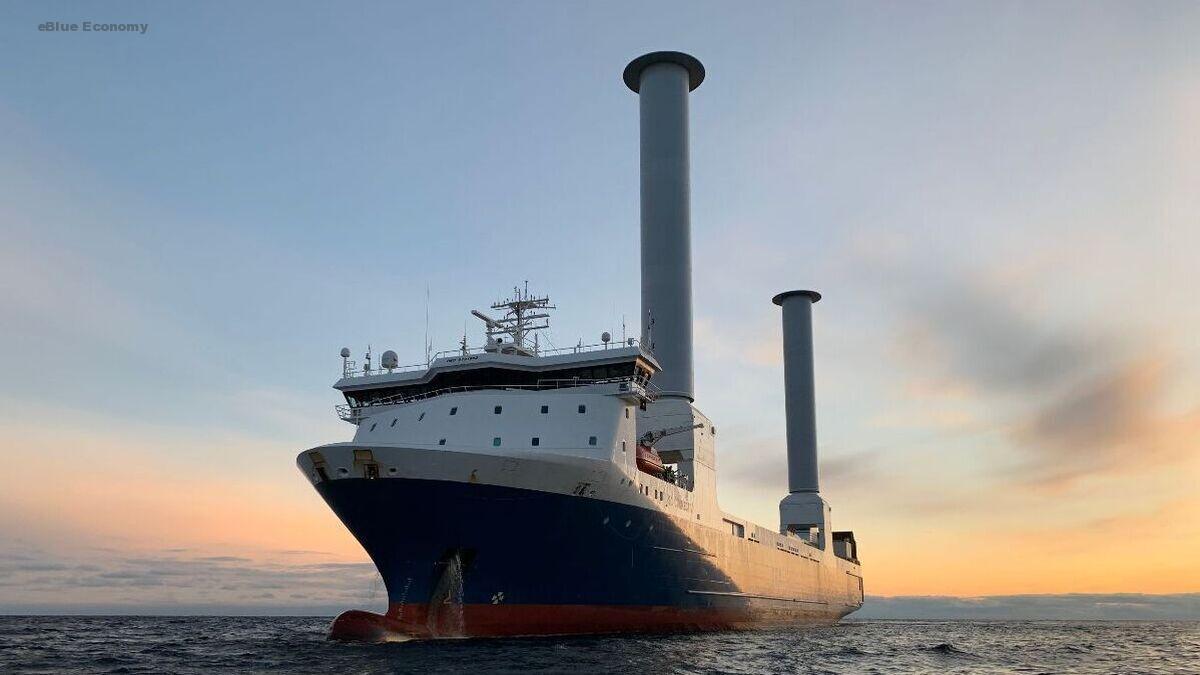The installation marks the world’s first tiltable Rotor Sail
Finnish clean technology provider Norsepower Oy has successfully installed two 35-m tall rotor sails aboard SC Connector, a roro vessel operated by Sea Cargo, a logistics provider in the North Sea market
The installation can help the 12,251-gt vessel achieve fuel consumption, fuel cost and carbon emissions reduction of up to 25%.
The company said the installation marks the world’s first tiltable Rotor Sail, showcasing that vessels that sail height-restricted routes can also benefit from this propulsion system
SC Connector transits through bridges and requires the rotor sail to tilt horizontally (Image: Norsepower Oy)
Analysis conducted by both companies suggested the installation can help the 12,251-gt vessel achieve fuel consumption, fuel cost and carbon emissions reduction of up to 25%. In good wind conditions, the sailing vessel will maintain regular service speed by sail alone.
The Norsepower rotor sail is a modernised version of the Flettner rotor, a spinning cylinder that uses the Magnus effect to harness wind power to thrust a ship. The system is fully automated and detects when the wind is strong enough to deliver fuel and emissions savings, at which point the rotor sails start automatically.
Trading route

Norsepower chief executive Tuomas Riski said “Completing the installation has been extremely rewarding, as it reflects how, in taking a collaborative approach with a customer, we can innovate to create solutions that allow rotor sails to benefit almost any vessel type or trading route.”
Sea-Cargo managing director Ole Sævild said “We are focusing on utilising available renewable energy and using it for direct propulsion to design more environmentally friendly vessels. The rotor sail technology has been proven in the market for a while, but the size is unique for our project.”
SC Connector sails between western Norway, Denmark, the Netherlands, Sweden and Poland and transits under multiple bridges and powerlines, requiring the rotor sails to tilt almost horizontally when required.
Mr Sævild added “The sails are far more efficient than conventional sails of the same size and the tilting function is essential to our voyage routes. Given the estimated emissions savings, we will use our experience of this full-scale project, and proceed to develop it further for other vessels in our fleet.”
IMO targets 2030
Mr Riski said “As we get closer to 2030 IMO targets, we are seeing our technology gaining momentum – with the market seeing the flexibility we can provide to suit different vessel requirements. This installation demonstrates the technology can go a long way to future-proofing IMO greenhouse gas emissions compliance, while ensuring significant emissions and fuel reductions to a variety of vessel profiles today.”
This month, Norsepower announced its first newbuild order for the installation of five tilting rotor sails on board a large bulk carrier.
Source : Rivira News















